How Bempton Cliffs became seabird conservation birthplace after bloody history
“I have had people in tears of joy because they have seen a puffin for the first time in their life,” smiles Brian Snowdon as he stands on one of the windswept viewing platforms on Bempton Cliffs on a February morning which could charitably be described as bracing. “You get such a range of people up here, from the dedicated birdwatcher to the people who couldn’t name one thing. You can help them tell the different ones apart and we try and pass our passion and enthusiasm on.”
Snowdon is one of dozens of volunteers known as ‘Seabird Interpreters’ at the site on the Yorkshire Heritage Coast which is run by the RSPB. As is common during the winter, the visitor centre, pathways and the cliffs themselves are fairly quiet – but it will soon become a hive of activity as half a million seabirds gather between March and October to raise their families on the towering chalk cliffs, accompanied by tens of thousands of visitors keen to see such an extraordinary spectacle for themselves.
Advertisement
Hide AdAdvertisement
Hide AdSnowdon, who is originally from Durham but now lives near Filey, says it is a privilege to be an active part of things at Bempton Cliffs even during the quiet (and cold) season. “I have been in the RSPB most of my adult life. I was an IT manager and worked in an office for 44 years, so this is heaven. It is just brilliant.”
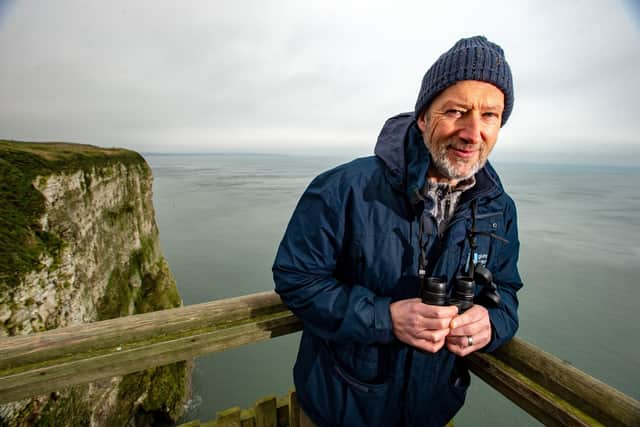

While seabirds have been nesting on these cliffs for countless generations, the reception they receive from human visitors has changed greatly from the past.
Dave O’Hara, senior site manager at Bempton for the RSPB, explains that while pleasure cruises along the base of the towering cliffs are as much loved today as they were in the Victorian era, there is one very important difference.
While those heading out to sea in the summer months now seek the thrill of seeing puffins, gannets and guillemots close at hand, many of their counterparts in the 19th century had an entirely contrasting objective: to kill as many seabirds as possible.
Advertisement
Hide AdAdvertisement
Hide Ad“People were going out on boats to shoot the birds,” O’Hara explains. “It was a combination of things – done for sport but also seabirds’ wings and feathers were used for hats. Lots of people used to come out from Bridlington, it was a communal activity in a way. It is almost a bit similar now to people going out on cruises to look at the birds. But that is obviously a really positive change.”
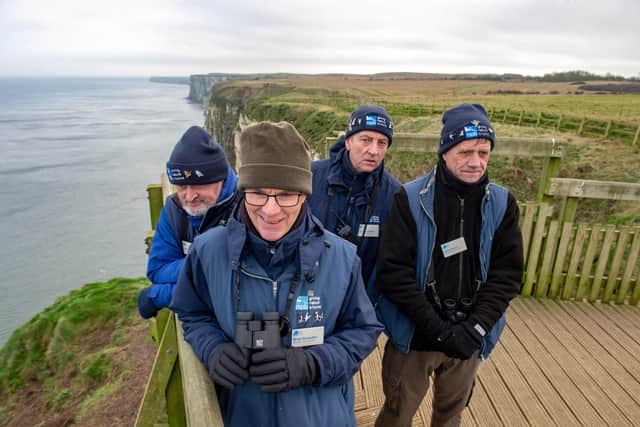

Slaughtering sea birds for sport and the collection of their feathers for hat-making was a widespread activity but the cliffs between Bempton and Flamborough became a particular hot-spot for such activity. The mass destruction was graphically described by Yorkshire conservationist Charles Waterton in 1838 as he lamented “parties of sportsmen from all quarters of the kingdom” who “spread sad devastation all around them”.
“No profit attends the carnage; the poor unfortunate birds serve merely as marks to aim at, and they are generally left where they fall,” he wrote. “Did these heartless gunmen reflect, but for one moment, how many innocent birds their shot destroys; how many fall disabled on the wave, there to linger for hours, perhaps for days, in torture and in anguish; did they but consider how many helpless young ones will never see again their parents coming to the rock with food; they would, methinks, adopt some other plan to try their skill, or cheat the lingering hour.”
After public condemnation of the residents of Bridlington in 1868 following a speech by Professor Alfred Newton about what was happening in the area, the Rev Henry Frederick Barnes-Lawrence of Bridlington Priory formed the Association for the Protection of Sea-Birds and a year later his group’s activities resulting in the passing of the Sea Birds Preservation Act 1869. “That was the birthplace of seabird conservation,” says O’Hara.
Advertisement
Hide AdAdvertisement
Hide AdHowever, the collection of seabird eggs was not banned until almost a century later through the Protection of Birds Act 1954. It meant that for decades there was the continuation of a long-standing practice where ‘climmers’ would descend the cliffs tied to ropes that could be hundreds of feet long to take eggs from nests that would be sold on. “There are quite amazing photographs of people going down on bits of rope with just a policeman’s helmet for protection,” O’Hara says.
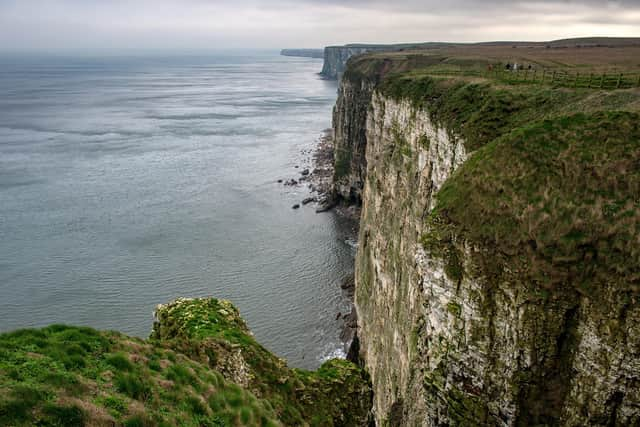

By the end of the 19th century, around 80,000 eggs per year were being taken from the area. When the practice was outlawed in the 1950s, fewer than 10,000 eggs could be found on the cliffs. Today, the situation is much different, with the focus on conservation rather than exploitation. The RSPB became involved with Bempton Cliffs back in 1969 and over the years have gradually made the site more visitor-friendly, culminating in the opening of a expanded visitor centre in 2015 following a £1.3m upgrade.
“At first it was just a beach hut,” says O’Hara. “Then there was a small car park and I think in 1992 half of the centre was created and the car park enlarged. 2015 was the first year of this new centre.
“Visitor numbers are just about 100,000 per year, it is busiest during the nesting season. May and June are the big months for the seabirds but this place is fantastic all year around. There is always something happening.”
Advertisement
Hide AdAdvertisement
Hide AdHe says one of their proudest conservation achievements has been massive increases in the numbers of guillemots having gone from just a few breeding pairs in the 1960s. “By the early 1980s, the there were a couple of thousand of pairs and we now have 13,500 pairs. That is a massive success story.”
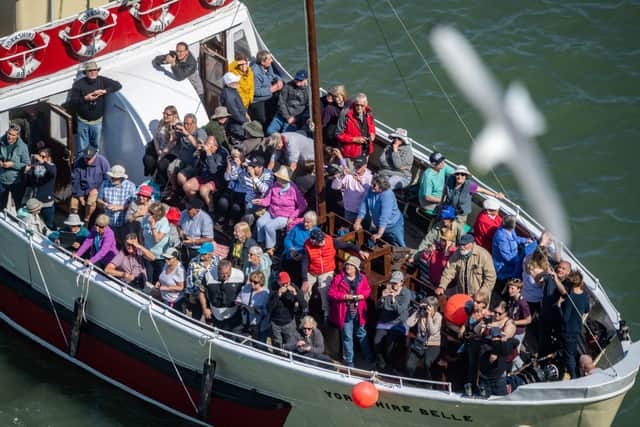

O’Hara says it is a privilege to be a small part of the rich history of the seabirds of Bempton. “It is almost certain they have been nesting here as long as there have been cliffs and seabirds and sea. Cliffs give them safety from hunters and it is rich fishing grounds. Quite a few of the seabirds go out 30 to 40km, the gannets can go hundreds of kilometres. But generally you need food not too far from where you are nesting.”
O’Hara has only been in his current role since June 2019, having previously been based in the Peak District, but worked at Bempton in the early 1990s and says one of the most positive changes in recent years has been the introduction of volunteers to provide expert information and guidance to visitors, as well as helping with practical jobs around the visitor centre.
One such helper is Steve Prest, from Sherburn, who has been a volunteer for three years.
Advertisement
Hide AdAdvertisement
Hide Ad“It has been brilliant, more so than what I expected. You meet people from all walks of life. You are interacting with people every day. When you retire you get peace and quiet every day, but that is not always a good thing. Doing this, you meet people from all walks of life and from all over the country. The volunteers are a great bunch of people, full stop.
“If you live in an area, you can take it for granted and probably I did with this place but not any more.”
Climate change ‘looming threat’ for seabirds
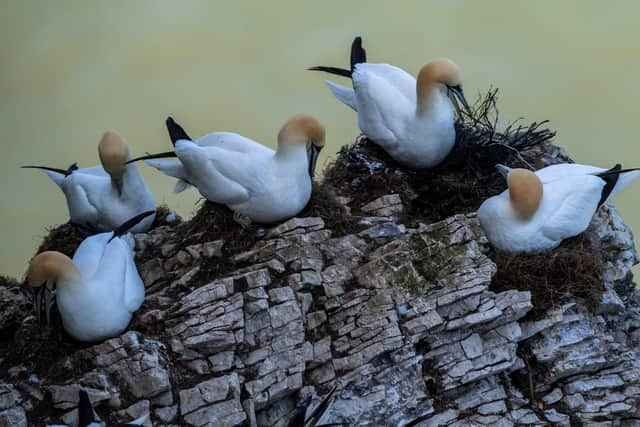

Rising ocean temperatures as a result of climate change are affecting seabirds, Dave O’Hara warns.
“Climate change is the big looming threat for seabirds,” he says. “There is some evidence now that the warming of the sea is having an impact and changing fishing stocks.”
Advertisement
Hide AdAdvertisement
Hide AdAccording to the European Environment Agency, the rate of increase in sea surface temperature in all European seas has been about 10 times faster than the average rate of increase during the past century, with the North Sea rising five to six times faster than the global average.
“One thing we can do is raise awareness of what is happening,” says O’Hara. “Kittiwakes have had a really low chick population for the last six to seven years. That might be a problem with food supply.”